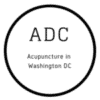Points an Meridians
acupuncture Points and meridians
The Points
The main meridians are dotted with strategic areas. Contrary to what the layman usually imagines, these points have no specific therapeutic virtue in them. That is, there is not a point of sleep, a point of angina, dental pain or abdominal colic. The points allow, as mentioned above, to influence the price of energies.
A point is located on a well determined anatomical zone. The sensation of inserting the needle into the skin is a very furtive sensation and can be painless or more or less painful, depending on the point, the speed of insertion, the diameter of the needle and the sensitivity of the patient.
« (…) The puncture site can then be located with the free hand with two fingers on either side of the point to be bitten (…) This way of proceeding ensures the attenuation of the biting sensation. ». Dr Chen You Fa – College of Acupuncture of Paris
« The left hand is heavy and presses to disperse energy, the right is light and slowly penetrates; such is the way not to hurt. » Biao You Fu – Marks of profound prose poem.
Traditionally, there are about 360 points distributed over the meridians that cover the entire surface of the body. However, other points were subsequently identified and, depending on the model used, more than 2,000 points can be found. The points are considered as gateways of entry and/or exit of energies through the body.
The meridians
Detailed article: Meridian in traditional Chinese medicine.
Old card of Chinese medicine representing a meridian
Acupuncture points are grouped into groups called meridians. These points are connected to each other in a non-linear manner, unlike the schematic representations.
There are 12 main meridians, each associated with one organ (lungs, heart, liver, etc.). They begin (or end) at the tip of a finger (or toe). According to the course of a river, of which they are the correspondence on the body, they grow from their source (tip of a finger) towards the center of the body. They have many tributaries, or secondary meridians, and feed their energy to the flesh, muscles, internal organs and the whole body. There are 8 other so-called « extraordinary » meridians which control the activity of the main meridians, from which they take part of the route and to which they provide certain connections. They are not directly connected to the organs and bowels and do not have the structure and ramifications of the main meridians.
They are grouped in :
– 4 meridians Yang : Du Mai, Dai Mai, Yang Qiao Mai, Yang Wei Mai.
– 4 meridians Yin : Ren Mai, Chong Mai, Yin Qiao Mai and Yin Wei Mai.
The best known of these meridians is Chong Mai, in relation to a large number of meridians, which is called « the sea of blood » but also « the mother of the 12 meridians ».
The central lines of the body are crossed by two particular meridians, one anterior (REN MAI) called « conception », the other posterior (DU MAI) called « governor ». Meridians are therefore the channels through which the body receives this energy, which can be nutritive supply, information supply (especially from outside) but also entry points for certain diseases.
The concept of disease in traditional Chinese medicine
The disease is approached according to the concept of Chinese medicine. The diagnosis will not be, as in the West, the identification of the disease, but the identification of the corresponding syndrome: i.e. the cause of dysfunctions that explains the manifestation of symptoms and clinical signs present in the person. There are many syndromes in Chinese medicine referring to dysfunctions in the meridians, viscera or organs. Each syndrome has clinical signs and symptoms that can manifest themselves in different diseases, and conversely, many diseases can be caused by different syndromes. Depending on the diagnosed syndrome, the points corresponding to the treatment will be used during acupuncture treatment.
Source and complete page : wikipedia fr . Content not modified. Licence https://creativecommons.org/licenses/by-sa/3.0/deed.fr

